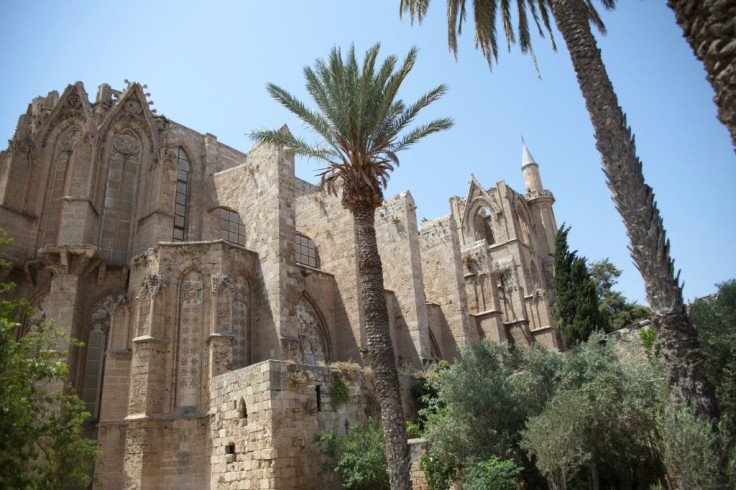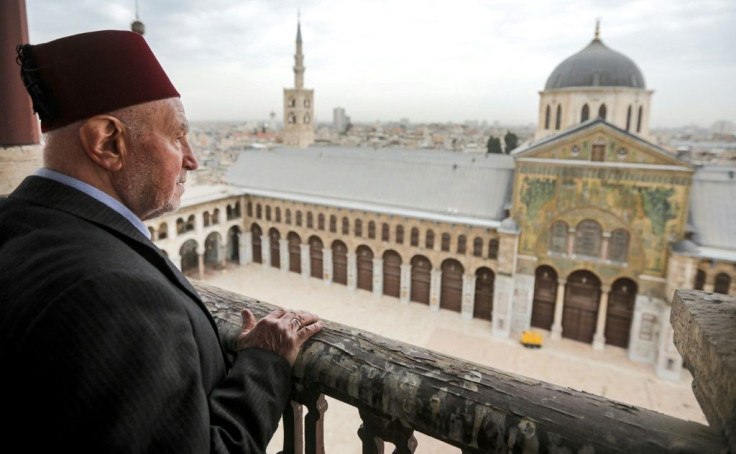Hagia Sophia The Latest Muslim-Christian Tussle Over Holy Sites
Istanbul's iconic Hagia Sophia is to reopen for Muslim worship as a mosque after an almost nine-decade hiatus, in the latest historic tussle with Christianity over religious sites.
The UNESCO World Heritage site was constructed as a cathedral during the Byzantine empire but converted into a mosque after the Ottoman conquest of Constantinople in 1453.
A Turkish court on Friday overturned a 1934 cabinet decision to turn Hagia Sophia into a museum, clearing the way for a July 24 reversion to its status as a mosque.

The move adds to a long list of such conversions of holy sites over the centuries. The following are examples:
Algiers' Ketchaoua Mosque was built in about 1612 and enlarged in 1794, making it one of the country's main mosques.

The French, a year into their 1830-1962 colonial reign, turned it into the Catholic church of Saint Philippe.
The first mass was celebrated there on December 24, 1832.
In 1838, it was consecrated the Algiers Cathedral and enlarged, destroying most of the old mosque.
But with Algeria's independence in 1962, Ketchaoua again became a mosque, hosting its first Friday prayer in 130 years. Since then, it has been renovated with Turkish funding.

Selimiye mosque in northern Nicosia, originally the Roman Catholic cathedral of Saint Sophia, was the work of French masons who accompanied the Crusades.
It was built in the 13th century during the reign of the Frankish Lusignan dynasty on the eastern Mediterranean island.

The cathedral was converted into a mosque after the Ottoman seizure of Nicosia in 1570.
Tradition has it that imams preparing to deliver the Friday sermon climbed into the minbar, or pulpit, leaning on a sword used during the conquest of the city.
The finest example of Gothic architecture on the island, the Catholic cathedral of Saint Nicholas in the northeastern city of Famagusta was consecrated in the 14th century during the Lusignan period.
It was transformed into Lala Mustafa Pasha Mosque after the Ottoman empire captured the coastal city in 1571.

Attarine Mosque in the Mediterranean city of Alexandria was originally an octagonal church dating back to 370 and dedicated to St Athanasius, a pivotal figure in the Coptic Orthodox church.
The place of worship was converted into a mosque during the Islamic invasion of the seventh century, and it is named after its location in the old spice market of Alexandria.
During the Napoleonic invasion, explorers believed the tomb of Alexander The Great was buried inside the mosque in a green sarcophagus.

It was renovated several times during Ottoman rule, and has been open to the public since its latest rebuilding in 1976.
The site of today's Al-Omari Grand Mosque in downtown Beirut was a Roman temple or bath site before the Byzantines built a church there.
After the Islamic conquests it was converted into a mosque named after Islam's second caliph, Omar ibn al-Khattab.
But when Frankish crusaders conquered Beirut in the early 12th century they turned it back into a church, before its capture in 1187 by Muslim conquerer Saladin -- who turned it back into a mosque.
The crusaders then recaptured it and transformed it into a cathedral in 1197. Finally in 1291 the Mamluks captured Beirut and converted it back into a mosque, which it has remained ever since.
Mosques in the Palestinian West Bank town of Nablus also reflect its history throughout the Byzantine era, the Islamic conquests, the Crusades and the Mamluk period.
A number are linked to Judaism and early Christianity, such as Al-Khadra, which has been a mosque since 1187 after having served as a church during the Crusades.
The city's Great Mosque was originally a church built by Roman Emperor Justinian I in the 6th century.
In 1186, it was converted into a mosque by the Ayyubids after Saladin's conquest.
Cordoba mosque, known as the Mezquita, in Spain's southern region of Andalusia was the holiest site of Muslim worship in the West during the Umayyad caliphate of the 10th and 11th centuries.
It has been a Catholic site since the Christian reconquest of the city in 1236, after which a cathedral was built inside the building.
Regarded as one of the finest monuments of Moorish architecture, the mosque-cathedral was added to UNESCO's World Heritage List in 1984.
The Umayyad mosque in the Old City of Damascus is one of the holiest places of worship in Islam.
It is located on the site of a temple of Jupiter which Roman Emperor Theodosius I transformed into a church in the fourth century.
It became a mosque in the seventh century and contains the shrine of John the Baptist, who is revered by both Muslims and Christians.




















